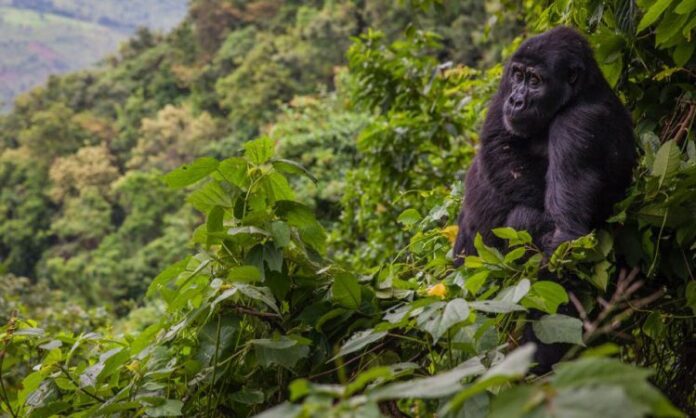Bwindi Impenetrable Forest, located in southwestern Uganda, is one of the last remaining habitats of the endangered mountain gorilla. This UNESCO World Heritage Site is renowned for its rich biodiversity, dense vegetation, and stunning landscapes. With an estimated 459 mountain gorillas living in the region, Bwindi is home to nearly half of the world’s remaining population of this critically endangered species.
Mountain gorillas are highly social animals that live in family groups led by a dominant male, known as a silverback. These silverbacks are crucial for the protection and cohesion of the group, which consists of females, their offspring, and younger males. The gorillas spend their days foraging for food, primarily consisting of leaves, fruits, and flowers. Their diet plays a significant role in maintaining the forest’s ecosystem, as their feeding habits contribute to the growth and regeneration of plant life.
The survival of mountain gorillas in Bwindi is not without challenges. The primary threats to their existence include habitat loss due to agricultural expansion, poaching, and diseases transmitted by humans. As local communities seek to cultivate the land for farming, the gorillas’ habitat is increasingly encroached upon, leading to fragmentation of their living space. Additionally, the illegal hunting of gorillas remains a concern, despite strict laws protecting them.
In response to these threats, conservation efforts have intensified over the years. Organizations such as the Uganda Wildlife Authority and the Bwindi Impenetrable Forest National Park staff have implemented various strategies to protect the gorillas and their habitat. Anti-poaching patrols, habitat restoration projects, and community education programs are just a few initiatives aimed at promoting the long-term survival of these animals.
Ecotourism has also emerged as a vital tool in the conservation of mountain gorillas. The park offers gorilla trekking experiences, allowing visitors to observe these magnificent creatures in their natural habitat. The revenue generated from tourism not only funds conservation efforts but also supports local communities by providing jobs and fostering sustainable practices. Local guides play a crucial role in this initiative, as they share their knowledge about the gorillas and educate tourists on the importance of conservation.
The success of these conservation efforts has shown promising results. The mountain gorilla population in Bwindi has been steadily increasing, with recent surveys indicating a growth in numbers. This positive trend highlights the effectiveness of collaborative conservation strategies and the critical role that local communities play in the protection of these iconic animals.
As we look to the future, the continued survival of mountain gorillas in Bwindi Impenetrable Forest relies on ongoing conservation efforts, community engagement, and responsible tourism practices. By protecting the gorillas and their habitat, we not only preserve a vital part of Uganda’s natural heritage but also contribute to the global fight against biodiversity loss. The story of the gorillas in Bwindi is a testament to what can be achieved through dedication, cooperation, and a shared vision for a sustainable future.



